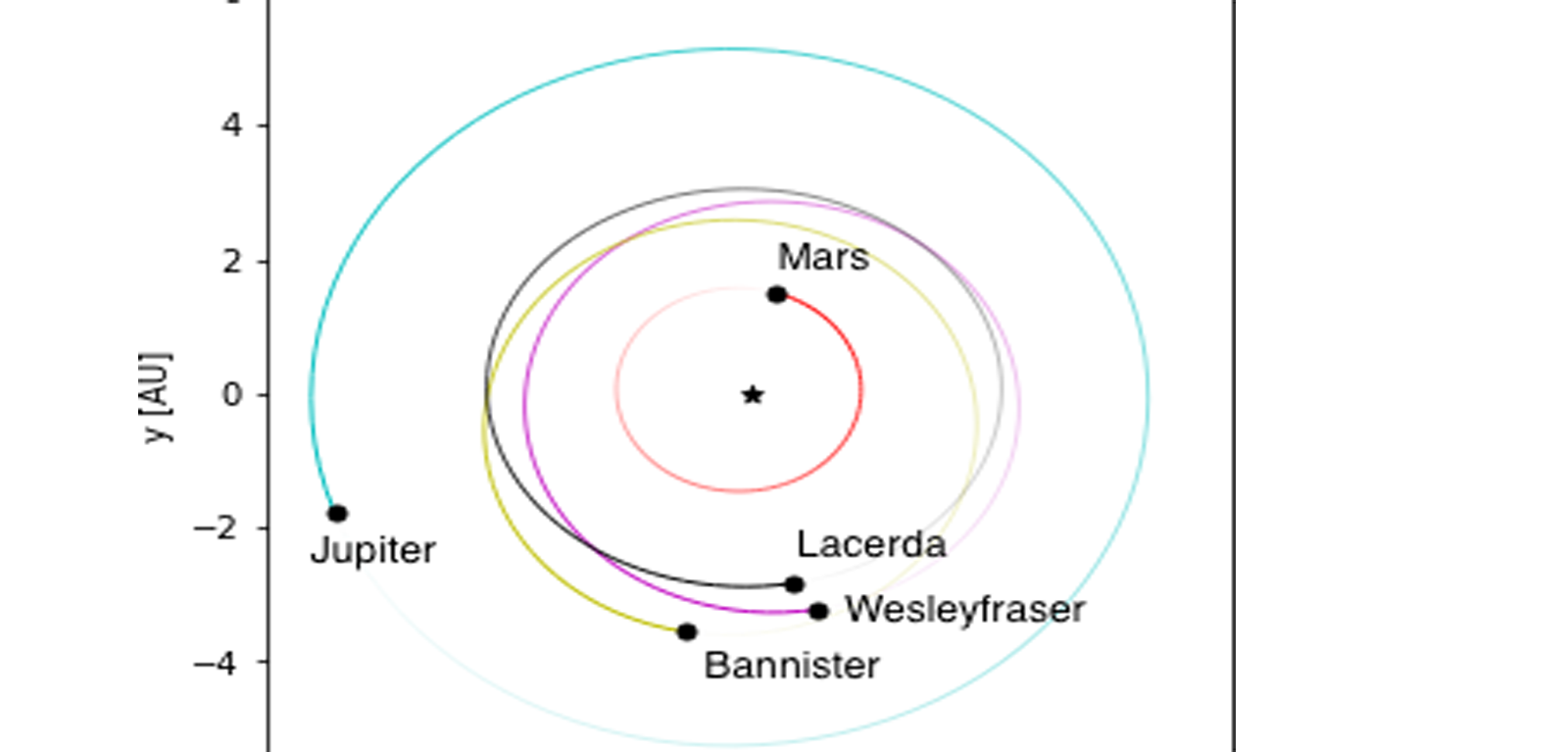Success written in the stars for Queen's astronomers
Three members of Queen's Astrophysics Research Centre have the great honour of having asteroids named after them!

Doctors Michele Bannister, Pedro Lacerda and Wes Fraser were informed of the honour at the end of the recent Asteroids, Comets, Meteors 2017 Conference in Montevideo, Uruguay.
All three asteroids lie out in the asteroid belt between Mars and Jupiter - but fortunately, there is no prospect of them colliding with the Earth anytime soon.
Dr Bannister, who is originally from New Zealand but now a Research Fellow at ARC, said: "My asteroid was discovered in 1979 by astronomer Eleanor Helin, during her surveys of the solar system with a telescope among the eucalyptus trees and kangaroos at Siding Spring, in Australia. It feels quite special to have a connection through the years to a pioneer who worked at an observatory where I too have spent many nights observing."
Asteroid (10463) Bannister orbits 467 million km (289 million miles) from the Sun and takes 5.5 years to orbit. It is 10.9 km across and its day is 4.8 hours long.
Asteroid (10019) Wesleyfraser orbits 462 million km (286 million miles) from the Sun and takes 5.4 years to orbit. It is 11.4 km across and takes about 10 Earth-days to spin once.
Asteroid (10694) Lacerda orbits 414 million km (257 million miles) from the Sun and takes 4.6 years to orbit. It is 11.7 km across and spins once every 7.2 hours.
Asteroids are issued official identification numbers by the International Astronomical Union’s Minor Planet Center, once the asteroids' orbit is precisely known. Naming is then approved by an international committee of astronomers within the International Astronomical Union. Not all asteroids are named, however, only around 5%.